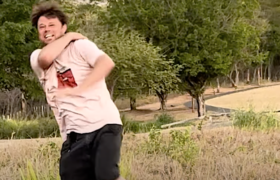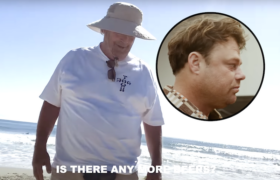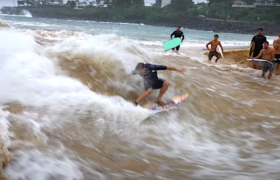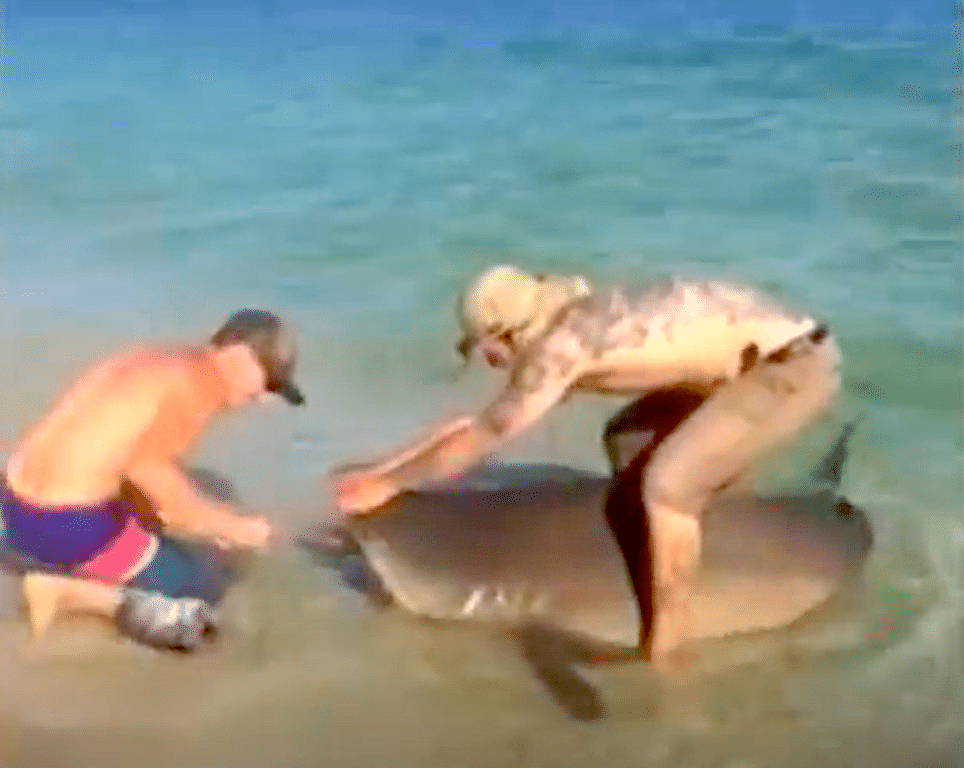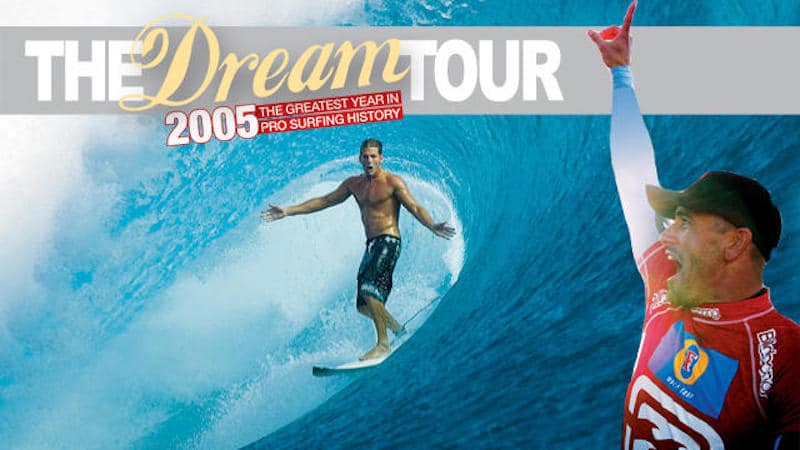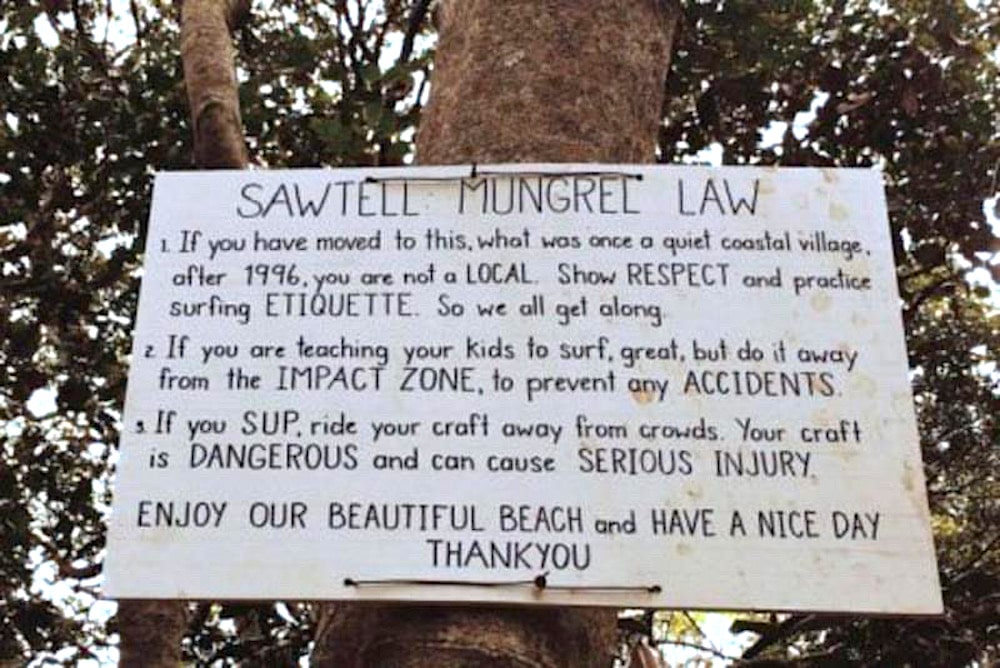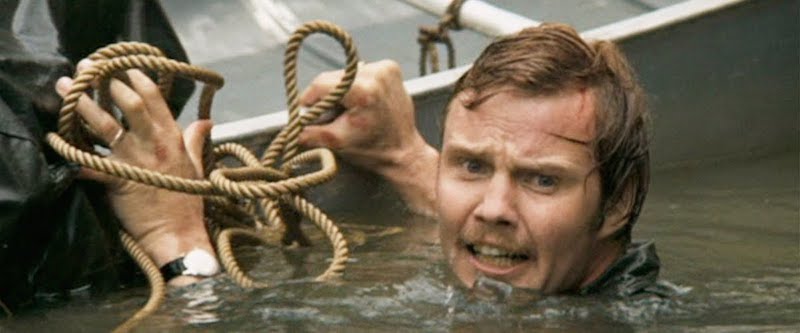Ugly babies, beautiful men!
What baggage do you bring, what preconceived notions do you harbour when it comes to the question of the Hobgood twins?
To be honest my knowledge was shamefully scant, before I sat down and watched their doco: And Two If By Sea.
A variation of the question, what is a Hobgood, answered by friends, family and fellow travellers on the pro tour, anchors the opening and closing scenes of the film.
One proffered answer, “A southern fried chicken surfing hillbilly” put me on side straight away.
I’m a version of that human animal myself, minus the Jesus infatuation.
As far as paying attention while their storied careers played out, the Hobgoods were mostly a background hum for me, surfers I was vaguely aware of, who came into focus during Tahiti or Fijian interludes.
In the pantheon of smooth American goofyfoots, in the generation before I was a Machado man, at least until The Drifter was released. During the time of the Hobgoods’ Pro Tour reign that coincided with watchable webcasts (say post 2005) the harder edge of Martinez was more my bag.
As they’ve aged the twins have become more physically distinct.
Damo, more solid, square jawed and handsome.
CJ, a little rattier, more Florida dirtbag, if I could use that term in it’s most affectionate way.
Early family footage of Dad Clifton, with the moustache and the mullet, a boss hog of the south is eerily similar to current day CJ.
The doco, follows a traditional biographical precis, the early family life is detailed, as a by-product shedding more light on how small Floridian surf can incubate and birth such a prodigious output of world-class surfing talent.
That combination of small, coastal towns, warm water, copious surf time and ultra-competitive sibling or small town relationships is now mirrored in current times in the Brazilian explosion.
The story of brothers has been compelling since Cain and Abel. Surfing brothers are no exception.
In the case of Bruce and Andy, it was a tale of competitiveness and risk taking that bordered on a death wish, with a tragic ending. CJ and Damo’s arc is less Greek tragedy and more classic hero’s journey.
They both make the Tour, enjoy life as globe-trotting studs, at one point being the highest-paid sibling combination on Tour.
An “accidental” World Title falls into CJ’s lap as a result of September 11, 2001. His humility in struggling to accept the legitimacy of the Title is refreshing. The regret overlaid onto the achievement by Damo makes it more poignant. Damo was surfing Pipe when the Title was awarded at Sunset.
He missed his brother’s signature achievement. Those misses cut deep.
The guts of the film deals with Teahupoo, and the fall-out on family life from pursuing passion and points in this extreme arena amidst the intense sibling rivalry.
In that sense the doco takes on an almost war-time feel.
You could slot the famous opening dialogue in the Saigon Hotel Room from Apocalypse Now in there. You know the one, where Martin Sheen can’t cope with the return to normal life after the intensity of Vietnam, gets divorced and heads back into the chaos of war: “When I was here I wanted to be there, when I was there all I could think of was getting back in the jungle.”
The best scenes of the film are found here.
CJ’s mind-blowing west bomb with Damo just inside. Damo’s dislocated shoulder on the opening wave of his Final with Kelly Slater in 2005. That’s the Final where Kelly bagged two tens, including the opened beer can inside the tube.
A move that Damo, who was absent from the Final on his way to hospital, described as “disrespectful.”
The agony and the ecstacy is real, as is the terror, and the consequences.
The modern American cult of optimism posits fear as nothing but a troublesome psychological construct.
The Teahupoo wipeout scenes are a stunning rebuke of that concept.
“What’s on the other side of fear? Nothing,” is the mantra put forth by Hollywood celebrities like Will Smith.
What’s on the other side of fear at Teahupoo is illustrated by Damo Hobgood in one of the most powerful passages in the film, when he talks us through an almost fatal wipe-out, describing putting his fingers into holes in his head after collision with the reef and a cool, divine breeze flowing through a deeply altered state of consciousness as his life swung in the balance. The post-traumatic impact is hinted at when Damo phones his Mum Maureen in a scene of deep emotional reckoning.
The film is worth watching for this scene alone.
CJ cops his own emotional reckoning in Tahiti.
The glamour and the temptations of tour life meant he couldn’t keep it in his pants and the weight of the infidelity caused a breakdown in the crucible of Teahupoo.
“The wages of sin is death,” is the mental self-talk that he mercilessly flagellates himself with. The resulting divorce once his babe finds out the news and the disintegration of his family unit is the first time the fallout of the pro surfing life is directly dealt with.
This journey into character and emotional transparency does mark a shift in surf film-making.
It sets this film, and others like Heavy Water, Kissed by God and even Momentum Generation apart from the more chest-thumping, boys own adventure, weren’t we all magnificent tone of docos like Riding Giants and Busting Down the Door, to name a couple off the top of my head.
I like this new wave of revealing, authentic type of film, much, much more.
The Hobgoods lose their sponsorship and in a long tail-end to their careers, Damo falls off Tour and CJ spends five long years struggling with no major sponsor. CJ gets his happy ending retirement lap after an injury wildcard while Damo struggles on with a sense of unrealised ambition, which challenges his own family stability.
A thousand tragic endings could be had from material like this.
But the ship rights itself and somehow the brothers find peace, at opposite sides of the country.
If you were religious, it’s an argument for the unexpected arrival of grace.
How much of the Hobgoods is a good thing?
I think, more than we have gotten.
I finished the film wanting more southern fried chicken surfing hillbilly in my life.
The denouement of the film takes pace with the brothers surfing Grajagan, playing out, with good grace now, the intense sibling rivalries that had determined their destinies.
I realised what beautiful surfers they were and that I wanted to see more of them.
The Tour doesn’t always bring out the best. Especially on the back end of a career.
I hope ELO has watched, there are many lessons within.
(Watch And Two If By Sea on iTunes, Amazon Prime etc.)
